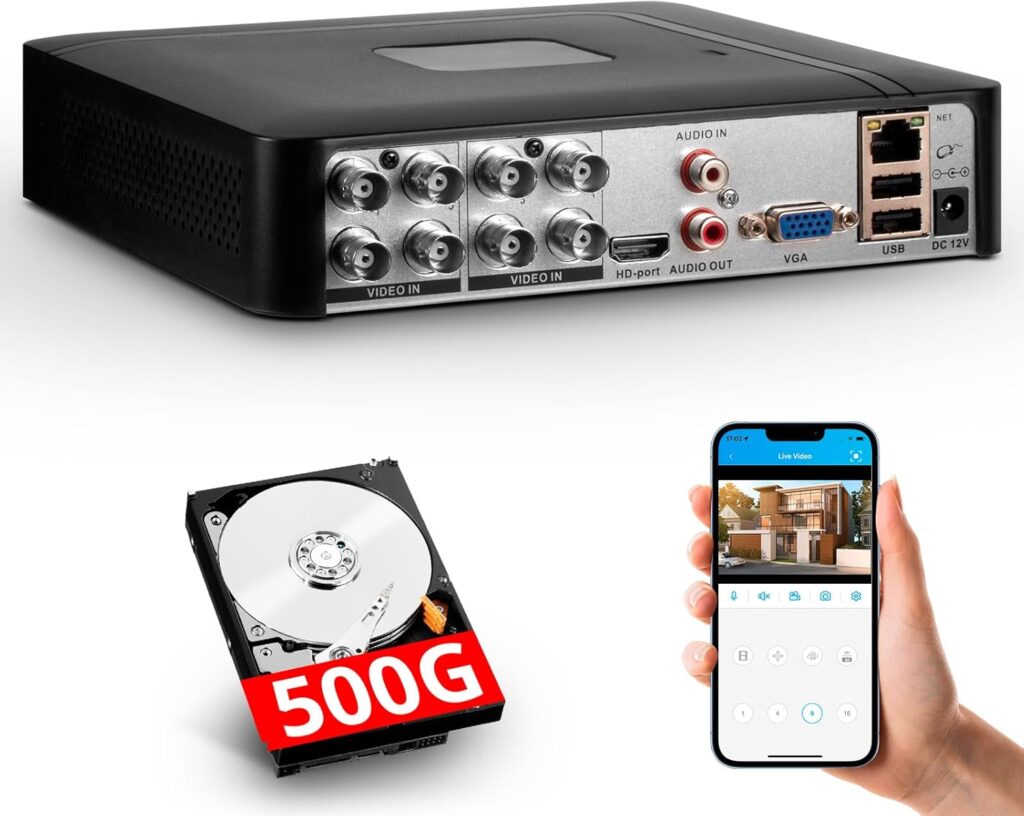
Recording Devices of CCTV
CCTV (Closed-Circuit Television) systems are essential for enhancing security in a variety of environments, such as homes, commercial properties, and public spaces. One of the most vital components of a CCTV system is the recording device. These devices store and manage video footage captured by CCTV cameras, allowing users to review, analyze, and archive crucial recordings. In this article, we will explore the different types of CCTV recording devices, explain how they work, and highlight the benefits of each type.
What Are CCTV Recording Devices?
CCTV recording devices are hardware that stores and manages video footage captured by CCTV cameras. These devices record, process, and often compress video data, ensuring efficient storage and retrieval. Depending on the user’s needs, the devices can range from basic digital video recorders (DVRs) to advanced network video recorders (NVRs), and even cloud-based solutions.
Recording devices store footage for different periods based on storage capacity and user settings. Users can access footage remotely, view it in real time, or play it back for later investigation or monitoring.
Types of CCTV Recording Devices
Several types of recording devices are used in CCTV systems, each with distinct features, advantages, and best-use cases. Let’s explore the most common ones:
1. Digital Video Recorder (DVR)
The Digital Video Recorder (DVR) is a widely used recording device in traditional analog CCTV systems. DVRs receive video signals from analog cameras through coaxial cables. The DVR converts these analog signals into digital data and stores the footage on a hard drive.
Key Features of DVR:
- Compatibility with Analog Cameras: DVRs are designed for use with analog CCTV cameras, which transmit video signals through coaxial cables.
- Hard Drive Storage: DVRs store footage on internal hard drives, which can be upgraded for more storage capacity.
- Motion Detection & Alerts: Many DVRs include motion detection features, triggering recordings when movement is detected in the camera’s field of view.
- Local Storage: DVRs store video data on local hard drives, accessible through the system’s interface or remotely.
Best Use Case: DVRs are perfect for environments with existing analog CCTV infrastructure where cost-effectiveness is a priority. They are commonly used in residential, small business, and older commercial setups.
2. Network Video Recorder (NVR)
Network Video Recorders (NVRs) are the modern alternative to DVRs, primarily used with IP (Internet Protocol) cameras. Unlike DVRs, NVRs do not need video conversion because IP cameras already send digital signals. NVRs capture and store video data from IP cameras over a network (local or remote), making them more versatile and scalable.
Key Features of NVR:
- Compatibility with IP Cameras: NVRs are designed to work with IP cameras, which transmit digital video signals over a network, typically via Ethernet or Wi-Fi.
- Centralized Management: NVRs allow users to manage multiple IP cameras from one central location, making it easier to monitor and control a large CCTV system.
- Higher Quality Video: IP cameras connected to NVRs provide high-definition video resolution (4K and beyond), which is a significant improvement over analog systems.
- Remote Access: NVRs support remote access, enabling users to view footage from any location using a smartphone or web browser.
Best Use Case: NVRs are ideal for modern, large-scale CCTV systems, especially in commercial, industrial, and corporate settings where high-definition video quality, remote monitoring, and scalability are crucial.
3. Hybrid Video Recorder (HVR)
The Hybrid Video Recorder (HVR) combines the features of both DVR and NVR systems. It can support both analog and IP cameras simultaneously, making it an excellent solution for businesses or homes transitioning from analog to IP-based CCTV setups.
Key Features of HVR:
- Compatibility with Both Analog and IP Cameras: HVRs accept input from both analog and IP cameras, offering flexibility in system expansion and upgrades.
- Seamless Integration: HVRs allow users to integrate new IP cameras with their existing analog infrastructure, saving money and minimizing downtime.
- Flexible Storage Options: HVRs provide a mix of local and cloud storage options based on the user’s needs.
Best Use Case: HVRs are ideal for environments with an existing analog CCTV system that wants to gradually upgrade to IP cameras without replacing the entire infrastructure.
4. Cloud-Based Video Recording
Cloud-based video recording is an emerging trend in CCTV technology. Instead of storing footage on physical devices like DVRs or NVRs, cloud-based systems upload video data to remote servers. This method eliminates the need for physical storage hardware, making it a convenient option for users who value flexibility and remote access.
Key Features of Cloud-Based Recording:
- Remote Storage: Video footage is stored on secure cloud servers, reducing the risk of data loss due to hardware failure.
- No Local Storage Needed: Since the footage is stored off-site, users don’t need to invest in expensive storage hardware.
- Easy Remote Access: Cloud systems can be accessed from anywhere with an internet connection, providing greater flexibility and ease of monitoring.
- Automatic Backups: Cloud-based systems offer automated backups to ensure data is never lost.
Best Use Case: Cloud-based video recording is perfect for those who need scalable, remote, and easily accessible storage options. It is especially popular with small businesses, home users, and organizations seeking low-maintenance solutions.
Conclusion
CCTV recording devices form the foundation of modern surveillance systems, ensuring that video footage is captured, stored, and easily accessible for security purposes. Whether you choose a DVR, NVR, HVR, or cloud-based system, the decision depends on your specific needs, such as video quality, storage capacity, system flexibility, and remote access. By understanding the features and applications of each recording device, you can make an informed choice that best suits your security requirements.
